John Hedjuk's Wall House - Architectural Record
John Hejduk's famous project, designed in 1973 and reconstructed from drawings, represents a revolutionary approach to the idea of authenticity.
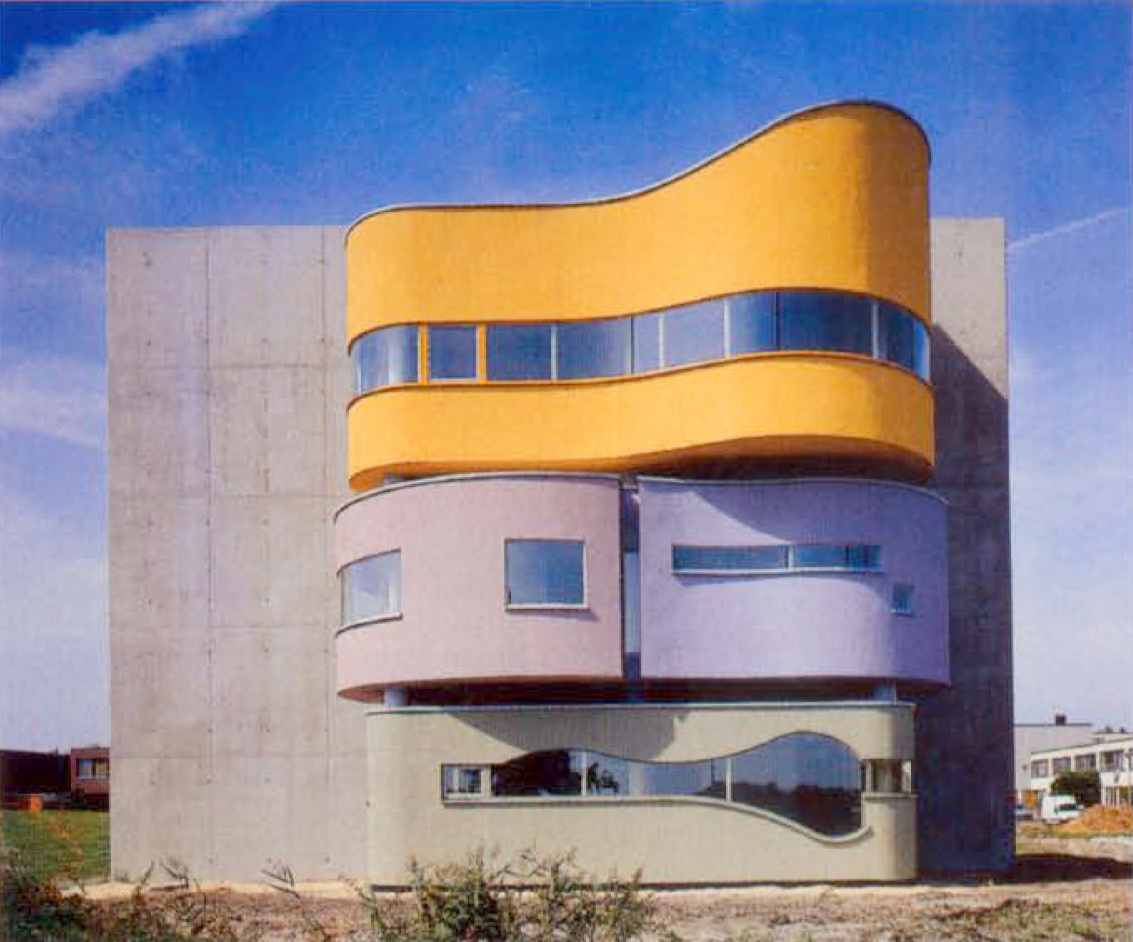
The Concrete wall, 53 feet high, 75 feet long, and 18 inches deep, is painted gray. The room volumes, painted in saturated pastel tones recalling Pierro della Francesca, stand out in bold relief.
Project: The Wall House 2, Groningen, the Netherlands Architect: John Hejduk, New York; Thomas Muller/van Reimann Architects, Berlin-- Thomas Muller, Principal: Otonomo Architects, Groningen--Derk Flikkema, project architect; Bart de Groot, Ramon Zuidersma, team. Client: Nick Verdonk, director of city planning, and of van de Wal, of Platform Gras, both of Groningen Consultants: Ingenieursbureau Dykhuis, b.v. Contractor: Wilma, b.v. Size: 2,500 square feet Completion date: October 2001 (finishes to be provided by owner)
Sources
Wood: Harrrvan, b. v.
Structural steel: H. Meyer Staalbauw
Glass: Nico Kool, b.v.
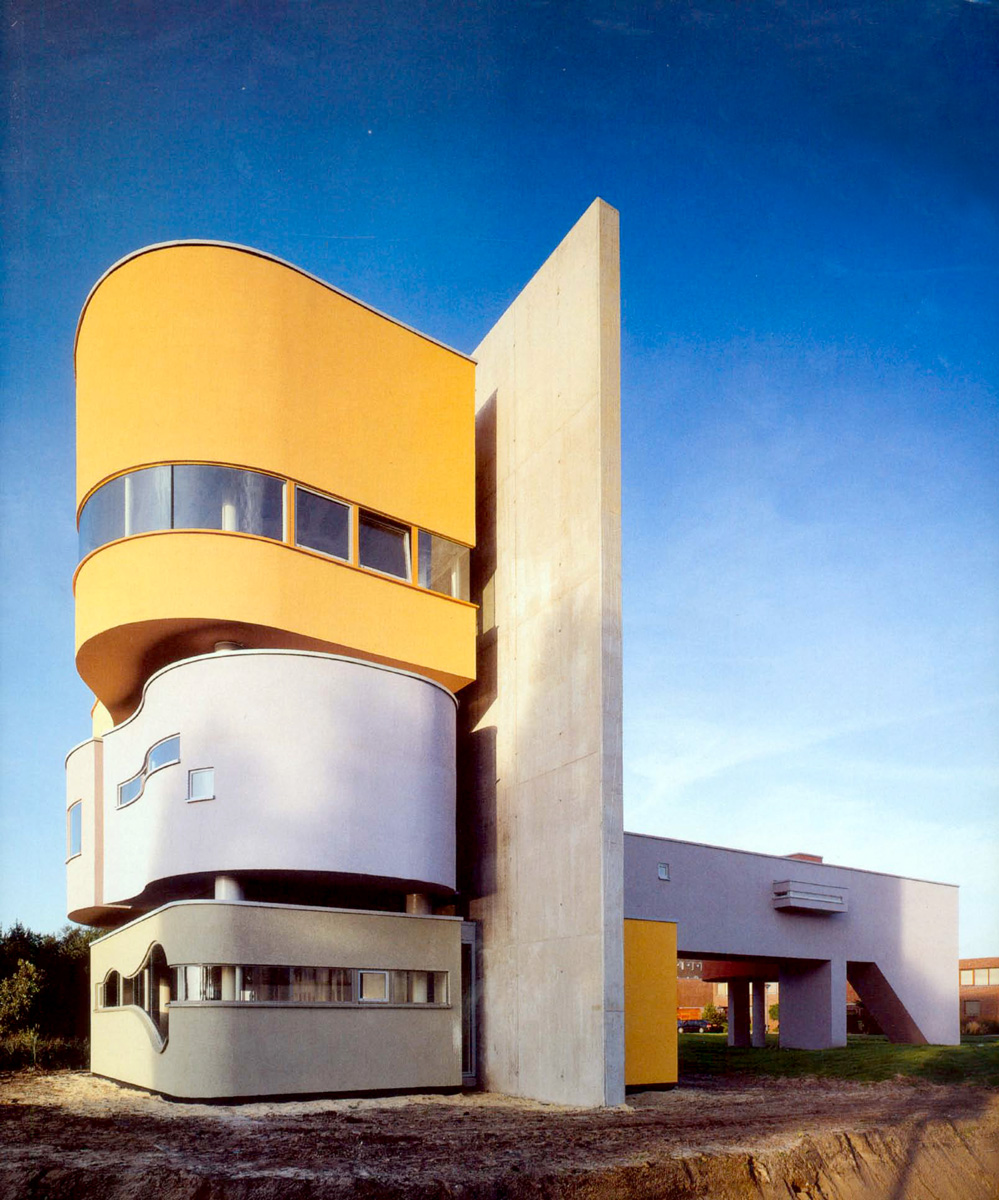
The concrete wall of the house was the largest pour In the history of Holland, even Including construction of the dykes -- the archetypal Dutch wall.
It is virtually without precedent that a house is constructed posthumously exactly as Intended by the architect. 28 years after it was designed, on a different continent, and for a different client. The architect, John Hejduk, the longtime dean of the lrwin S. Chanin School of Architecture at The Cooper Union in New York, unfortunately died in July 2000, just before construction began on his seminal project, the Wall House 2.
Hejduk had originally designed the Wall House 2 in 1973 (the first was done in 1968) for Ed Bye, a landscape architect and fellow faculty member. Plans for building the modestly sized primary residence, on a forested site in Ridgefield, Connecticut, were abandoned due to concerns over the cost of building.
But now it has been realized in Groningen, the Netherlands, as a result of a convoluted process that was brought to successful conclusion by the efforts of Niek Verdonk, Groningen's director of City planning, and Olof van de Wal, the head of Platform Gras, a city-sponsored architectural group.
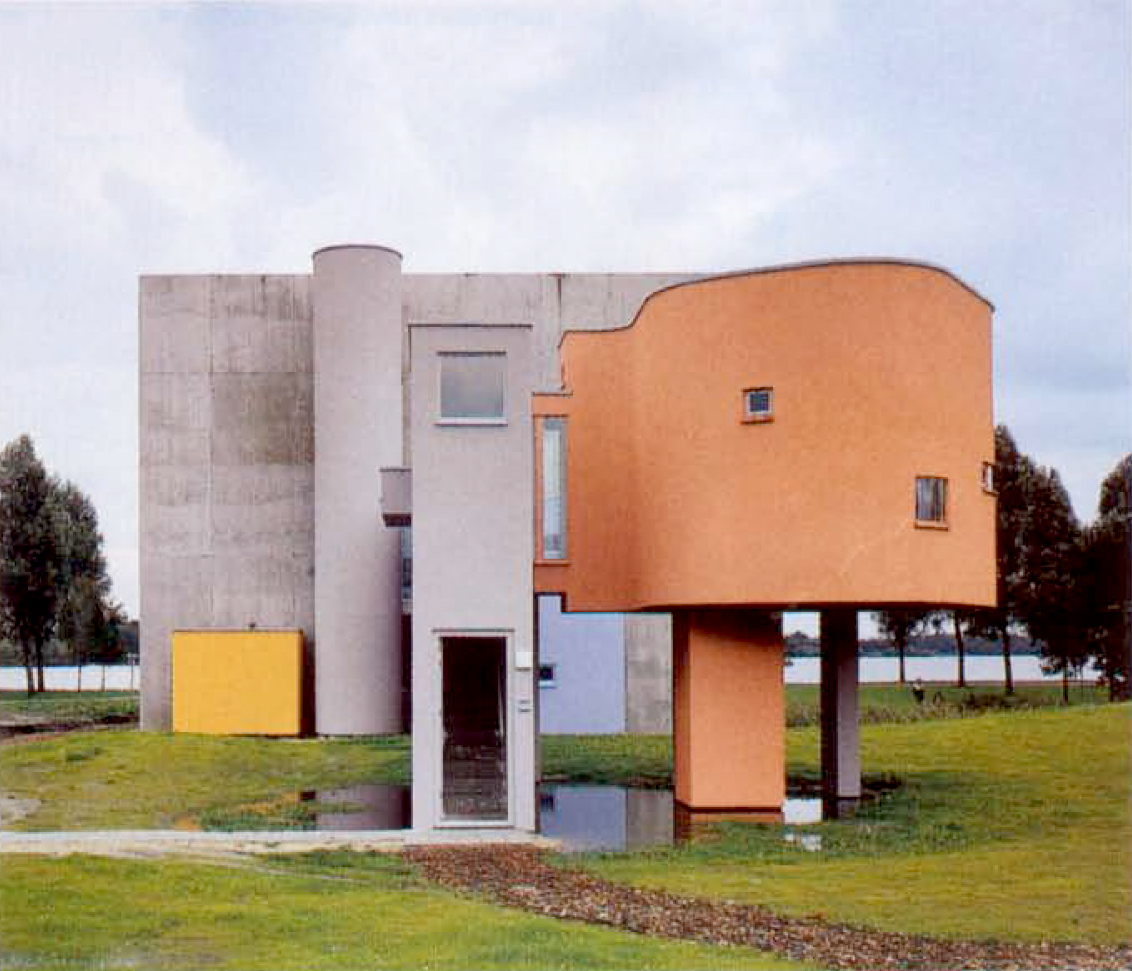
Context
For 11 years Verdonk and Van de Wal remained committed to constructing Hejduk's famous project, an extraordinary intersection of Alexander Gorlin, AlA, a New York architect, studied with John Hejduk and taught at Cooper Union from 1998-2000.
Cubist painting, Surrealist sculpture, and architecture, even as one potential client after another fell through. Then early this year, a development company, Wilma, b.v., decided to build the house at its own expense, turning it into a speculative venture. Due to building codes and construction techniques--which required, for example, leaving space between the wall and rooms for hand plasterIng-- the house was enlarged proportionally 20 percent from Its original size, to 2,500 square feet. A client has now purchased the house at a cost of $800,000 and will be moving into it in January.
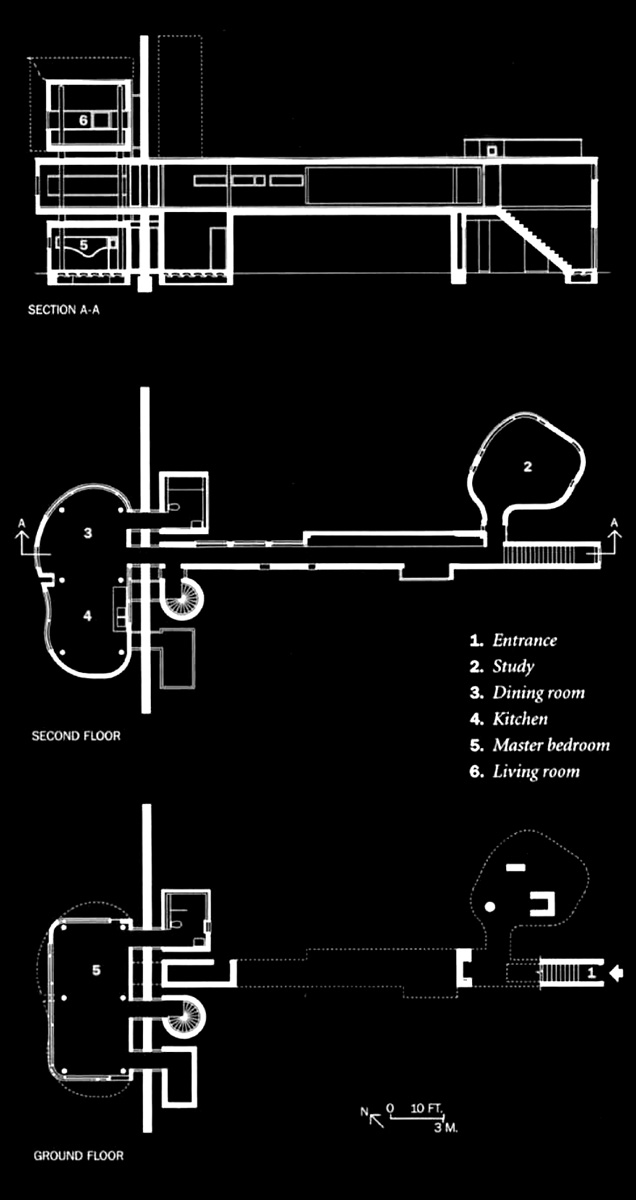
Process
Executing the design for a different time, place, culture, and client seems an impossible goal in terms of creating an authentic work of architecture. Nevertheless, the house in Groningen captures the intensity and flavor of Hejduk's model and drawings, effectively challenging conventional notions about authenticity.
The Wall House employs the vocabulary of Le Corbusier to explore the relationship between inside and outside in a more extreme way than did the Swiss-French master. You enter by going up a flight of stairs to the piano nobile, where you find various biomorphically shaped spaces containing the study and, at the end of a long corridor, the kitchen and dining room. Above is the living room, below is the bedroom. These distended volumes, which seem to be filled with air (or gas) and pressed tensely against the wall, appear cantilevered. However, they are supported by a grid of columns, emphasizing the wall as a rhetorical, not a structural element.
The original drawings had been suspended in the design development stage, but Thomas Muller of Berlin, a former student of Hejduk's, redrew the plans with Derk Aikkema of Otonomo Architects in Gronmgen, with Hejduk reviewing the drawings in each phase up until his death. As completed, the Wall House is a structure of reinforced concrete for the wall and columns, with a steel-framed corridor, wood stud walls, and a stucco exterior.
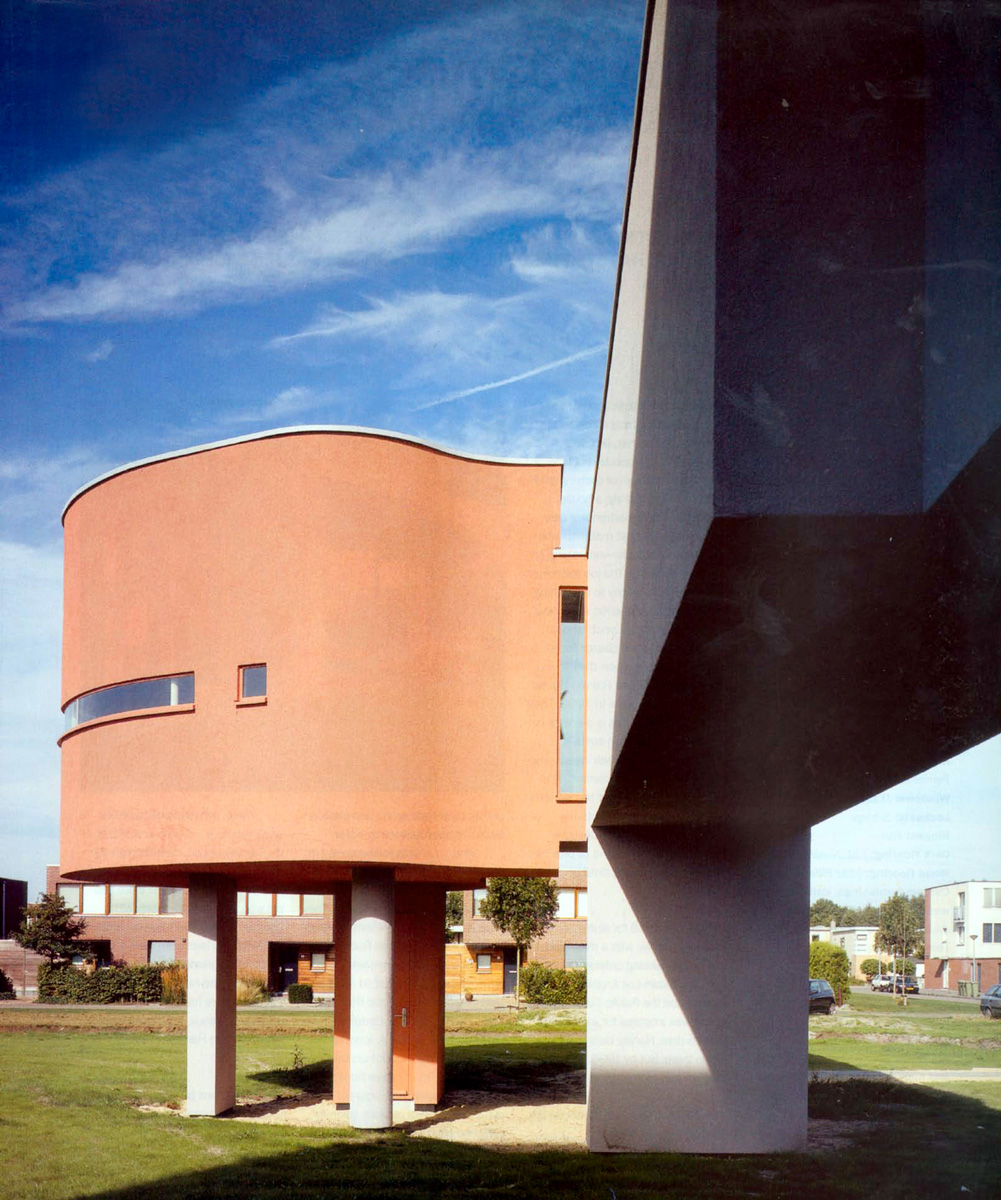
The interior will be finished by the owner, and some exterior pipes ( a periscope and a chimney) are to be added then.
Commentary
Conceptually the project follows the idea that animates a Greek temple, where once the type was perfected, it could be adapted to different sites, each one as authentic an Interpretation as the next.
Now that it is constructed, the Wall House, a project of mythical status, has taken on a new life, especially in a country that values architecture and design. In its new home on the polder, where the mists and fog of the lake and North Sea combine, it rises like an apparition, evocative and mysterious. It is living proof that an original architectural idea can survive not only the abandonment of the client, but the death of the architect, as well.